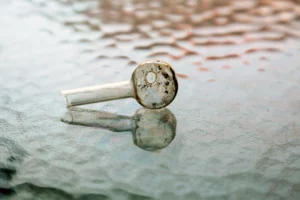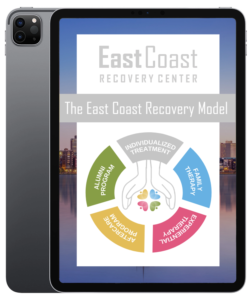Finding a meth pipe, or any drug paraphernalia, in your teenage child’s bedroom can be terrifying. According to the U.S. Department of Health and Human Services, in 2018, approximately two million individuals aged twelve or higher related that they had used methamphetamine in the last twelve months. Methamphetamine abuse can be damaging to several major organs in the body, as well as leading to long-term psychological difficulties. Additionally, research has demonstrated that teenage meth users suffer worse neurological impairment than meth users who are adults.
Fortunately, there is hope. Continue reading to learn about meth, the signs that your child may be using meth, and how you can get them the help that they need.
Methamphetamine Explained
Methamphetamine, commonly known as “meth,” is a man-made stimulant that affects the central nervous system. It is chemically related to amphetamine but has a much stronger effect. The feelings of pleasure it induces are similar to cocaine, but last much longer. Methamphetamine can be found in a few forms such as pills, powder, and chunks. It is referred to by various street names such as “crank,” “speed,” and “chalk.” The smokable version of the drug is identified as “ice,” “crystal,” “glass,” or “quartz” because of the clear, crystal-like pieces. It can be taken by smoking, snorting, ingesting, or injecting.
What is a Meth Pipe?
A pipe utilized for smoking methamphetamine is known as a crystal meth pipe. These pipes are generally made of glass, and have a container at one end to put the drug in. The other end has a little opening which is covered by a material such as metal or cloth. This opening is used to inhale the fumes and take them into the lungs. A meth pipe is also referred to by the slang terms “pizzo”, oil burner pipe, piece, banger or bong.

Meth pipes come in various styles, but their primary function remains the same. Some are plain in their design, though others can be quite ornate. Creating a meth pipe is a do-it-yourself activity and can be crafted from a selection of materials, with glass and metal being the most popular. Additionally, the coloring and patterns on them can also differ, depending on the materials used. Many of these pipes have distinctive names based on their look.
What Does Meth Look Like?
Methamphetamine typically appears as a colorless, odorless, and acrid-tasting crystalline powder that is easy to dissolve in water or alcohol. However, other hues of powder have been seen, including brown, yellow-gray, orange, and even pink. It can also be compressed into tablet form. It can be consumed in multiple ways, including snorting, smoking, and injecting. Crystal meth is mostly smoked and arrives in clear, bulky crystals that look like ice.
What Does Meth Smell Like?
When it is burned, meth tends to produce a mild, almost sweet aroma. As the substance is composed of potent chemicals, it can have a strong smell similar to paint. In some cases, those near meth labs can detect a smell that has been likened to the pungent cleaners used in medical facilities. Additionally, meth may smell like vinegar or ammonia, which is a scent often associated with window cleaners. Some have even compared the odor of meth production to that of rotten eggs or cat urine.
Signs of Meth Use in Teens
Unfortunately, it’s not uncommon for people to remain unaware of drug abuse until it has escalated to addiction. Methamphetamine has such a strong potential for dependency that it can be easy for someone to progress from recreational use to abuse and addiction. If you suspect your child is misusing meth, there are certain indicators you can look for to determine if that is the case. Here are five signs to watch for:
Extreme Weight Loss
Adolescents tend to turn to methamphetamines as a means to lose weight, but this supposed “quick-fix” only results in a lengthy addiction. As a result, meth leads to drastic weight reduction in an unhealthy manner, leaving teens appearing gaunt and extremely thin.
Tooth and Gum Issues
The components of methamphetamine are extremely poisonous and force the mouth to become parched, eliminating any saliva that would typically defend and clean the teeth. When users stay intoxicated for multiple days, they usually fail to brush their teeth, resulting in substantial dental deterioration. Additionally, one may observe burns around your adolescent’s lips due to smoking the narcotic through a hot glass or meth pipe.

Intense Mood Swings
The central nervous system is especially vulnerable to the effects of methamphetamine, and its use can quickly cause changes in a person’s mood and reactions to daily events. Parents should not just write off teens’ emotional instability as a typical part of adolescence; it could be a sign that the child has been using meth.
Memory Loss
Methamphetamine is an illegal substance manufactured with a toxic combination of noxious components and repulsive chemicals. It is not astonishing then that its consumption has a damaging effect on brain activity. Research in recent times has also revealed that even 16 year olds can present symptoms similar to Alzheimer’s disease due to the use of this drug.
Disinterest
If you observe that your child is exhibiting despondent behavior or no longer takes interest in school and other extra-curricular activities that they previously enjoyed, this is an indication you should be aware of. These symptoms usually coincide with a decrease in personal cleanliness – like showering or grooming less often.
Dangers of Teenage Meth Abuse
Young people who habitually consume crystal meth are at risk of becoming dependent on the substance. Even if they are only using it occasionally, the potential harm is still significant. This drug has a particularly damaging impact on health, as it can lead to inflammation in the heart. It can also cause a person to have seizures and experience a dangerously high body temperature if taken in large doses.
It is important to be aware of the damaging effects of methamphetamine use, as it should be sufficient to dissuade you from using the drug. Crystal meth has similar consequences to other stimulants, such as amphetamines and cocaine, on the body. Even if you take tiny amounts of crystal meth, the following effects may occur:
- Insomnia
- Weight loss
- Increased heart rate
- Paranoia
- Heart arrhythmia
- Facial scars
- Tooth decay
- Liver disease
- Delusions
- Kidney disease
The ramifications of utilizing crystal meth over a prolonged period are more severe and may include severe weight reduction, notable dental issues (referred to as meth mouth), agitation, confusion, difficulty sleeping, emotional instability, and aggressive conduct. People who use crystal meth may also present signs of psychosis like hearing and seeing things that aren’t actually there, suspicion, and false beliefs.
Another major problem associated with crystal meth abuse is the spread of bloodborne diseases like hepatitis B and C, as well as HIV. Teens often engage in risky sexual activities while under the influence of the drug, compromising their ability to think and make decisions. This is a risk regardless of the method of use. If the drug is injected, the risk of transmission is even greater due to the sharing of syringes and needles. On top of that, people already living with HIV/AIDS may see their condition worsen due to crystal meth use.

How to Get Help for Your Child
Even if your son or daughter is a teenager and still living with you, it can be difficult to assist them. Your approach could be supportive and understanding, but it might also have the opposite effect, causing the child to close off more. In order to detox from methamphetamine and gain the knowledge to manage the addiction in the long run, professional help is required. If you know that your child is using meth, take a moment to prepare for the upcoming discussion. Doing this now can provide a basis for a more successful outcome.
Addiction can be a difficult situation for the entire family, even if the affected individual is not living at home. Connecting with people who can relate to your experience can bring a lot of comfort. It may be beneficial to speak to a therapist who is knowledgeable about addiction or take part in an assistance group for family members of people with addiction. You will gain advice for your specific case and emotional backing.
Despite the fact that your child may be emotional and reluctant to your oversight and advice, try to communicate with them calmly. Make sure they understand that you love them. Clarify that it is the addiction you don’t like, not them. Tell them that methamphetamine addiction is life-threatening, that they need professional help, and that you will be with them every step of the way.
Meth Addiction Treatment in Boston, MA
When it comes to overcoming a substance use disorder like meth addiction, choosing the right recovery program is essential. East Coast Recovery Center is prepared to lend a hand to individuals in Massachusetts who are struggling with this addiction. If you are seeking help in tackling this problem, East Coast Recovery is here for you. Our rehabilitation treatment programs in Cohasset, Massachusetts provide tailored treatment plans to suit the individual needs of every client.
East Coast Recovery provides a range of treatment programs, including intensive outpatient treatment, partial hospitalization programs, and aftercare. We offer evidence-based and multidisciplinary treatment plans that concentrate on the patient’s physical and psychological health. In addition, we utilize therapeutic and holistic approaches to help people recover from addiction and mental health issues.
Contact the professionals at East Coast Recovery if you would like to learn more about our various programs and how we can help. You don’t need to battle meth addiction by yourself anymore. We will be with you through the entire process.











